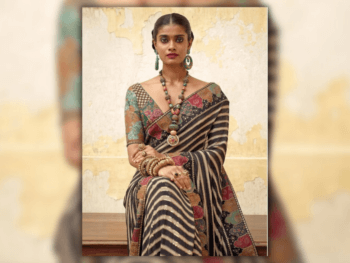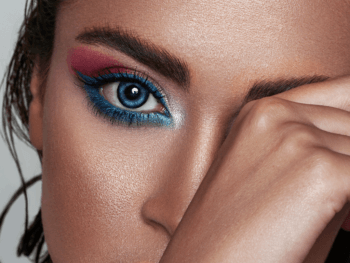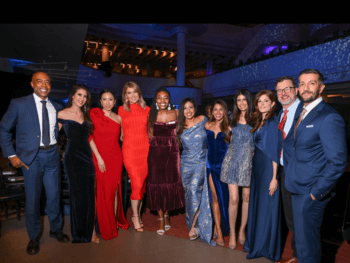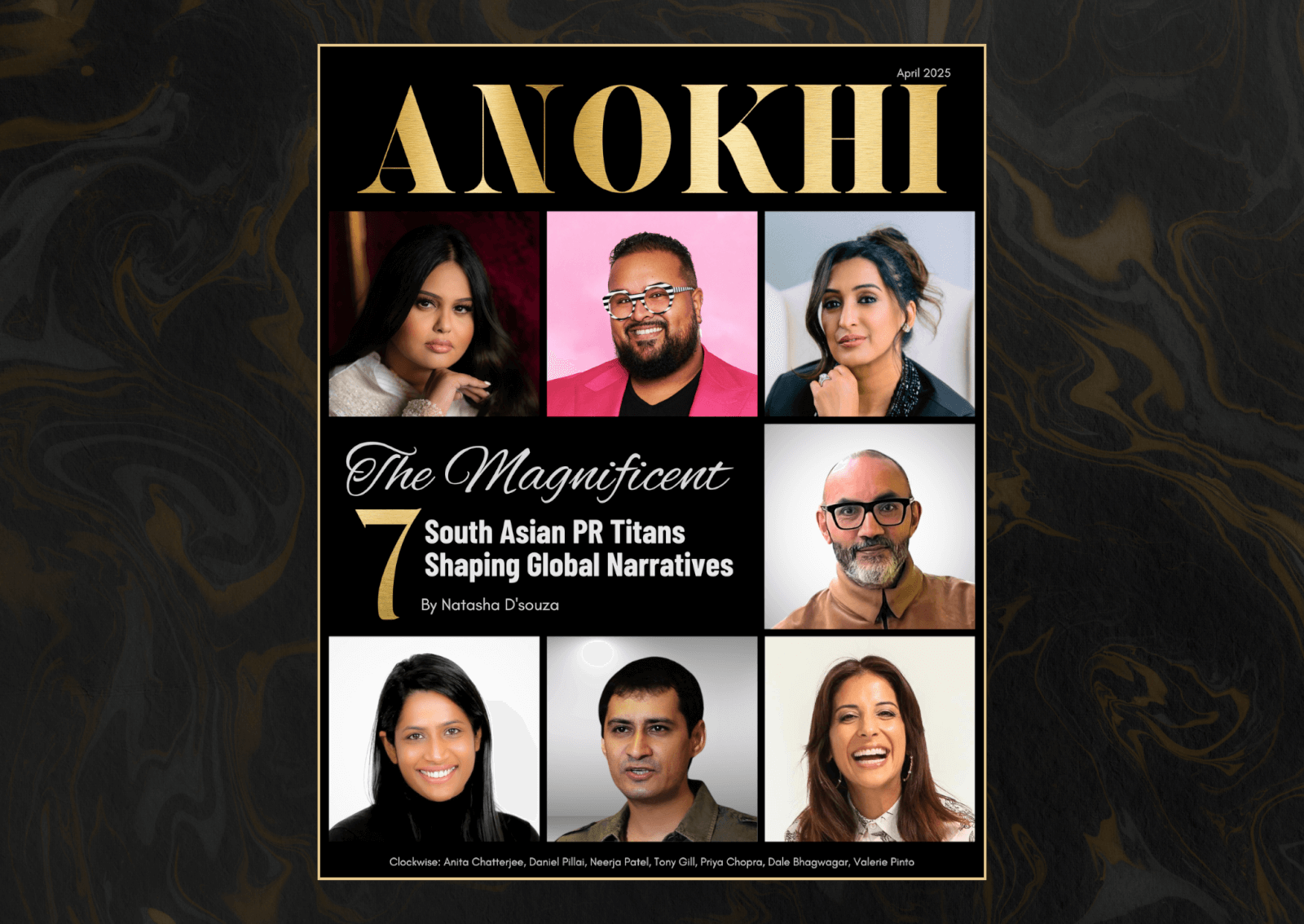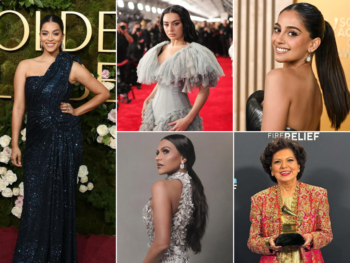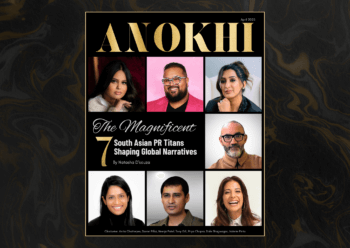The Changing Face of Hollywood: How South Asians Conquered The Primetime Space in 2015
Dec 21, 2015

From Priyanka Chopra to Aziz Ansari, 2015 was a big year for South Asians in Hollywood.
The waning days of every year witness a cavalcade of “Best-of” lists — counting down the top movies, shows, books, the biggest scandals, the breakout stars and so on.
Looking back on 2015’s media landscape, one of the more noteworthy — and long-overdue — trends has been diversity: shows like Empire, black-ish and Fresh Off the Boat that actively engage with the experience of being a minority in America, putting actors of colour at the forefront instead of draping them in stereotypes and cramming them in at the fringes of a Caucasian-driven narrative.
Indeed, several South Asian performers were at the forefront of Hollywood’s much-needed facelift.
Debuting last January (and returning for season two next month), Galavant was a singular creation, to say the least — a medieval musical-comedy about a disgraced knight’s (Joshua Sasse) song-and-dance-filled quest to reclaim his true love (Mallory Jansen). Aside from the fact that its very existence forced TV critics to coin a new genre, it stood out for a different reason: the casting of India-born, Canada-raised thesp Karen David in the role of Princess Isabella, the titular hero’s partner-in-crime.

Karen David behind the scenes, filming season one of Galavant.
Photo Credit: ABC
On one hand, David was just one Indian actress in a mostly white cast; but the fact that she snagged the role is encouraging when you consider what the producers originally had in mind for the character.
“It’s funny, because in the script, Dan [Fogelman] had written that his dream actress to play Isabella was Jennifer Lawrence,” David told ANOKHI. “And I was like, ‘So I kind of had no expectations . . . [but] I was told that the minute Dan met me, he just knew that I was his ‘Jennifer Lawrence girl.’ ”
What’s more, she continued: “The thought of being in a period comedy costume drama was a big dream of mine; I didn’t know if it was really gonna happen, because my look was not so much of the time, shall we say? [laughs] . . . To be able to play a Spanish medieval princess in Galavant was really a dream come true.”

Another actor who benefitted from some refreshingly open-minded major-network casting was Melanie Chandra, a former Miss India America whose Hollywood stock has been rising of late with roles in HBO's The Brink and most recently, freshman CBS medical drama Code Black. Speaking about the latter, Chandra let us in on the fact that neither her role of Dr. Malaya Pineda, nor that of her co-star Raja Jaffrey were initially conceived as being South Asian.
“I don’t think [the writers] let the race of the actors playing these parts [define them] . . . they didn’t see it as a roadmap but as an opportunity to create some interesting character elements,” Chandra said when chatting with ANOKHI in September.
Of course, the onus is also on the actors themselves to actively pursue roles that don't conform to the industry's typical portrayal of South Asians.
“For me, if something is [written for a] South Asian, I will definitely audition for it but it doesn’t mean I’m limited to play those roles," Chandra adds. "And I think what’s important is to have your representatives, whether it’s your agents or managers, know that you have that ability to do more than what’s just written as a stereotypical Indian character,”

Priyanka Chopra made the jump from Bollywood to Hollywood with Quantico.
Photo Credit: ABC/zap2it.com
Which brings us to Bollywood dynamo Priyanka Chopra, who this past fall made her Hollywood debut with Quantico, leading the ensemble cast as FBI recruit Alex Parrish, who finds herself having to unravel the most devastating attack on U.S. soil since 9/11. A soapy, sexy mash-up of Grey’s Anatomy and Homeland, the drama is already one of the fall season’s biggest hits, with even the show’s detractors singling out Chopra’s bravura performance as a highlight.
Once again, it’s the type of part Indian actors don’t typically get the chance to play on this side of the pond, which seemingly was a key factor in luring Chopra away from a thriving Bollywood career packed with its share of meaty roles.
“Alex is a badass. She’s my alter ego. She says and does the things you think and want to do, but are too scared to ‘pull the trigger.’ I love that about her,” Chopra told ANOKHI. “She’s so strong, sexy and mysterious, yet there is a certain vulnerability to her. I knew it would be an exciting role to sink my teeth into.”

Mindy Kaling and Ike Barinholtz in season four of The Mindy Project.
Photo Credit: City TV
Of course, it’s not just South Asian faces that have become more frequent, but voices as well. Though The Mindy Project was cancelled by Fox after three seasons last spring, Mindy Kaling proved too distinctly charming a presence for Hollywood to do without, as her cultishly adored sitcom was swiftly picked up by Hulu. Though the show’s had its share of troubles, overhauling the cast twice in the early going while struggling to find its stride, there’s no denying that it’s an indelible manifestation of its star/creator’s distinct comedic/romantic perspective, which has only become sharper in season four, now that she and her writers are no longer bound by the strictures of network TV.
"As writers, we have these sides that yearn for something great and to tell great stories," Kaling reflected at this year's PaleyFest (via IndieWire). "And it’s amazing to me, I had not in my lifetime really seen a show with a woman who was not a model or a twig or someone who was traditionally beautiful have a sexy, fun life; a life that I had felt like I had. And I didn’t think, 'Oh I want to be a pioneer.' You can’t think about that stuff when you create. But I’m so happy that there are people who are 14 or 15 who can see that."

Photo Credit: CityTV
Outside of her TV show, Kaling’s continued to be among the most respected and sought-after entertainers in the industry, routinely popping up in big-screen flicks like Seth Rogen's The Night Before and debuting her second book this past September, Why Not Me? — another quirky, thought-provoking collection riffing on, among other things, being a dark-skinned woman working in the land of the “honey blonde.”
“There are so many things I want to do, I’m like, ‘I don’t know if I can do this all in one life,’” Kaling quipped in a recent interview with British paper The Guardian. “Good thing I’m a Hindu.”
Of course, the most heavily buzzed South Asian talent of 2015 is Aziz Ansari, who made an auspicious debut with his hilarious yet heartfelt Netflix comedy Master of None. “Debut” may sound odd, considering that Ansari spent the previous seven years on cultishly adored NBC sitcom Parks & Recreation while also becoming one of the world’s most in-demand standups. But, just as Kaling had to leave The Office to truly shine as a writer and performer, this year Ansari unveiled a side we hadn’t seen before.

Aziz Ansari and Noël Wells tackle the complexities of modern romance on Master of None.
Photo Credit: Netflix
In addition to riffing on broader topics like dating and aging, Master of None passionately and incisively engages with issues specific to minorities, like the lack of compelling roles for Indian actors, and the disconnect between second-generation immigrants and their parents.
Ansari is very much a fitting subject to end on, because, more than anyone else of late, he’s been taking the industry to task for its lack of diversity, in a memorable appearance on The Late Show, and via an article he himself penned for the New York Times.
In the latter, he recounts the profound effect that 1986 comedy Short Circuit 2 had on him as a kid — specifically because of its Indian hero.
“I rarely saw any Indians on TV or film, except for brief appearances as a cab driver or a convenience store worker literally servicing white characters who were off to more interesting adventures,” Ansari writes. “This made Short Circuit 2 special.”
Imagine his surprise, years later, to discover his childhood role model was actually played by Caucasian actor Fisher Stevens in brown-face. The ostensible premise of the Times article is a meeting in which Ansari amicably confronts Stevens about his part in the film, but throughout, he brings up statistics and anecdotes illustrating the industry’s continued lack of diversity.

Ansari promoting one of his wildly popular Netflix standup specials.
Photo Credit: Netflix
He sums the situation up by noting that, “even at a time when minorities account for almost 40 per cent of the American population, when Hollywood wants and ‘everyman,’ what it really wants is a straight white guy. But a straight white guy is not every man. The ‘everyman’ is everybody.”
Indeed, it’s tough to come away from Ansari’s piece without thinking that there’s a long way to go in giving writers and performers of colour a proper platform, but if nothing else, 2015 has felt like the start of something.
Main Image Photo Credit: Netflix
Matthew Currie
Author
A long-standing entertainment journalist, Currie is a graduate of the Professional Writing program at Toronto’s York University. He has spent the past number of years working as a freelancer for ANOKHI and for diverse publications such as Sharp, TV Week, CAA’s Westworld and BC Business. Currie ...



















































